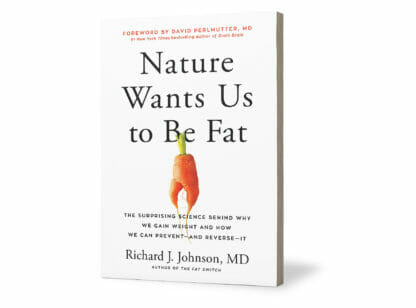Obesity is rising steadily around the world. More than one-third of American adults are obese. Of even more concern is that obesity quadrupled in teenagers in the last 30 years. The role of environmental chemicals in obesity, and obesity-related conditions such as type 2 diabetes and metabolic syndrome, has garnered increased attention.
Medical experts have maintained that diet and exercise are the major players in the obesity epidemic. However, there is increasing evidence that chemical toxins can disrupt metabolic processes and predispose some people to gain weight. Chemicals known as obesogens can alter certain aspects of human metabolism, disrupt normal hormonal activity and alter fat cell deposition by increasing fat cell size and numbers. Obesogens are also known as endocrine disruptors. This means they interfere with the chemical messaging signals of hormones by blocking receptor sites on cell membranes.
The World Health Organization has identified about 800 chemicals that are known or suspected to be endocrine disruptors. Research conducted for the past thirty years at the National Institutes of Health Sciences has shown that fat tissue acts as an endocrine organ. It is capable of releasing hormones related to appetite and metabolism. Some obesogens adversely affect hormones that control appetite, satiety, food preferences, and energy metabolism. The average person is likely to have more than 500-1000 times higher levels of toxic chemicals in the fat compartments of their bodies than in their serum. This includes all fatty adipose tissues and the brain.
Chemical pesticides in food and water, particularly atrazine and DDE – a DDT breakdown product – have been linked to increased BMI (body mass index) in children and insulin resistance. Certain pharmaceuticals, such as the diabetes drug Avandia (rosiglitazone), have been linked to weight gain in humans as have a handful of dietary obesogens, including the soy phytoestrogen genistein and monosodium glutamate.
Obesogenic chemicals called phthalates and organotins have also been found in designer handbags, wallpaper, vinyl blinds, carpet, toys, flame retardants, vacuum cleaner dust, air fresheners, laundry products, cigarette smoke and personal care products.
Another suspected obesogen is bisphenol A (BPA), which is found in the lining of some canned foods and credit card receipts. BPA has been shown to program fat cells to incorporate more fat and become very large. It also increases abdominal fat and glucose intolerance.
Another group of chemicals called persistent organic pollutants are difficult to avoid. These chemicals are persistent in the environment and are able to last several years before breaking down. They have been shown to cause damage to the energy producing parts of the body called the mitochondria and are associated with insulin resistance and metabolic syndrome. They include flame retardants found in mattresses, pillows, computers, wall insulation and many other products.
Here are things you can do to reduce your exposure to toxic chemicals:
- Choose organic products when possible and make foods rich in antioxidants (fruits and vegetables) a main part of your diet.
- Consider purchasing a quality air purifier for your home or work.
- Avoid scented products (air fresheners, fabric softeners and personal care products) as these may contain phthalates.
- Avoid food with artificial colors and flavors.
- Beware of canned goods. Some cans are lined with bisphenol-A and bisphenol-S, both of which are considered to be hormone disruptors.
- Avoid eating food heavily wrapped in plastic if possible.
- Parents should avoid lawn chemicals and prevent their children from playing on lawns that use such chemicals.
- Consider the following measures to detoxify stored toxins in body fat compartments:
- Infrared sauna therapy is being used by doctors treating victims of toxin exposure from the Gulf War, Agent Orange exposure in Vietnam and 9/11.
- The infrared sauna therapy is combined with Niacin (vitamin B3) to mobilize fat and free up toxic chemicals locked in all lipophilic fatty tissues and in your brain.
- For added elimination, use substances like activated charcoal and zeolite clay which will help pull the toxins from your blood and your GI tract.
- Glutathione supplementation (oral, intravenous, transdermal, or precursors such as N-acetyl cysteine or NAC) has been used extensively by functional medicine practitioners for toxic chemical elimination.
- Functional laboratory testing to measure body burdens of toxic chemicals (www.GPL4U.com/ GPL-TOX test).
Dr. John Dixon can be reached at the Natural Medicine Group (760) 345.7300.
Sources: 1) www.ncbi.nih.gov/pmc/articles/PMCC3279464 2) PubMed 235772225 3) PubMed 19914351














































Comments (0)